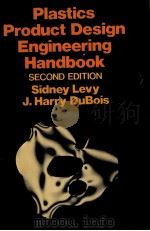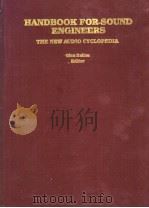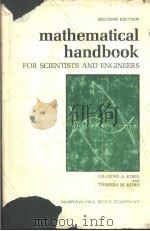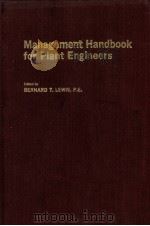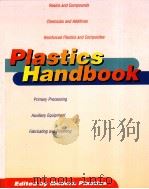《PLASTICS HANDBOOK FOR PRODUCT ENGINEERS》
| 作者 | JOHN SASSO 编者 |
|---|---|
| 出版 | 未查询到或未知 |
| 参考页数 | 468 |
| 出版时间 | 没有确切时间的资料 目录预览 |
| ISBN号 | 无 — 求助条款 |
| PDF编号 | 812487948(仅供预览,未存储实际文件) |
| 求助格式 | 扫描PDF(若分多册发行,每次仅能受理1册) |

Part ⅠPLASTIC MATERIALS1
1.CIIEMISTRY OF PLASTICS1
Theory of polymer formation1
Condensation polymers15
Phenol-aldehyde resins16
Urea- and melamine-formaldehydc resins25
Polyester resins30
Polyamides35
Vinyl polymers37
Acrylate resins43
Polystyrene45
Hydrocarbon resins46
Resins from cellulose48
Cellulose nitrate49
Cellulose esters of organic acids50
Cellulose ethers51
Summary54
Flow charts61
2.MATERIALS AND PROPERTIES70
Phenol-formaldehyde and furfural-aldehyde phenol materials71
Laminated phenolic products86
Cast phenolic resins102
Urea-formaldehyde molding materials108
Melamine-formaldehyde molding materials112
Cellulose-nitrate plastics117
Cellulose-acetate molding materials124
Cellulose-acetate-butyrate molding compositions145
Ethyl-cellulose plastics157
Methyl-methacrylate molding materials162
Polystyrene170
Polyvinyl acetals, formals, butyrals176
Polyvinyl-chloride plastics185
Vinyl chloride-acetate resin compounds196
Vinylidene-chloride plastics207
Nylon212
Polyethylene plastics217
Cast allyl plastics221
Low-pressure laminating plastics224
Summary of values for various plastic materials226
Testing methods and specifications for plastics251
3.PROCESSING AND FABRICATING253
Compression molding253
Transfer molding255
Injection molding256
Jet molding257
Molds and mold steels258
4.MMACHINING AND FINISHING PLASTIC PARTS262
Drilling263
Reaming266
threading, and tapping266
Lathe operations266
Milling operations269
Cutting gears269
Sawing operations270
Punching272
Embossing273
Polishing273
5.RECENT DEVELOPMENTS AND TECHNIQDES275
High-impact materials275
Influence of temperature on phenolic materials279
Shrinkage of phenolics283
Electrostatic high-frequency heating287
Dielectric heating of laminates292
Low-pressure hot-forming of laminated-phenolic sheet295
Low-pressure laminating302
Vacuum forming308
Part ⅡDESIGN OF PLASTIC PRODUCTS311
6.FUNDAMENTAL DESIGN CONSIDERATIONS311
Selection of material311
Costs311
Interpretation of test data317
Influencing characteristics317
Evaluating strength318
Shock resistance320
Elasticity and plastioity321
Hardness322
Electrical properties323
Thermal properties329
Optical properties333
Chemical properties334
Moisture absorption340
Aging and weathering341
Taste and odor characteristics342
Design for appearance342
7.DESIGN DETAILS350
Tolerances353
Wall thickness355
Inserts356
Threads359
Fastening360
8.COMMON FAULTS, CAUSES, AND REMEDIES IN MOLDED PLASTIC PARTS363
Phenolics and ureas—compression molding363
Cellulose acetates, polystyrenes, and vinyl materials—injection molding368
Cellulose acetates and vinyl materials—compression molding376
Part ⅢRUBBERLIKE MATERIALS: CHEMISTRY AND APPLICATION377
9.SYNTHETIC RUBBERLIKE MATERIALS377
Natural rubber378
Raw materials for synthetic rubber387
Preparation of synthetic rubbers (GR-S)391
Butadiene-acrylonitrile copolymer (perbunan)395
Neoprene (GR-M)396
Isobutene-isoprene copolymer (GR-I)397
Polysulfide rubbers398
Other Iubberlike materials399
Flow charts401
10.SYNTHETIC RUBBERS IN ENGINEERING DESIGN405
Factors affecting selection of a synthetic rubbcr405
11.BUTYL RUBBER409
12.BUTADIENE-ACRYLONITRILE RUBBERS422
13.GR-S SYNTHETIC ELASTOMIENS431
14.NEOPRENE RUBBER437
15.THIOKOL POLYSULFIDE SYNTIIETIC RUBBERS444
APPENDIX451
BIBLIOGRAPHY OF PLASTICS451
REFERENCE CATALOGS ON PLASTICS—INDEXED BY COMPANIES453
REFERENCE CATALOGS ON PLASTICS—INDEXED BY MATERIALS458
INDEX465
《PLASTICS HANDBOOK FOR PRODUCT ENGINEERS》由于是年代较久的资料都绝版了,几乎不可能购买到实物。如果大家为了学习确实需要,可向博主求助其电子版PDF文件。对合法合规的求助,我会当即受理并将下载地址发送给你。
高度相关资料
-

- HANDBOOK OF PLASTICS
- 1955
-

- Handbook of series for scientists and engineers
- 1965 Academic Press
-

- A HANDBOOK FOR ENGINEERS
- 1977 VIKAS PUBLISHING HOUSE PVT LTD
-

- Mold-making handbook for the plastics engineer
- 1983 Hanser
-

- Handbook of polymer composites for engineers
- 1994 Woodhead
-
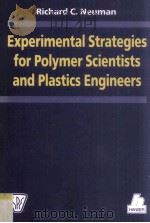
- Experimental Strategies for Polymer Scientists and Plastics Engineers
- 1997 Carl Hanser Verlag
-
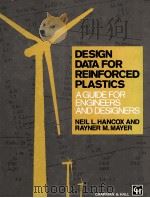
- DESIGN DATA FOR REINFORCED PLASTICS A Guide for Engineers and Designers
- 1994 CHAPMAN AND HALL
提示:百度云已更名为百度网盘(百度盘),天翼云盘、微盘下载地址……暂未提供。➥ PDF文字可复制化或转WORD
